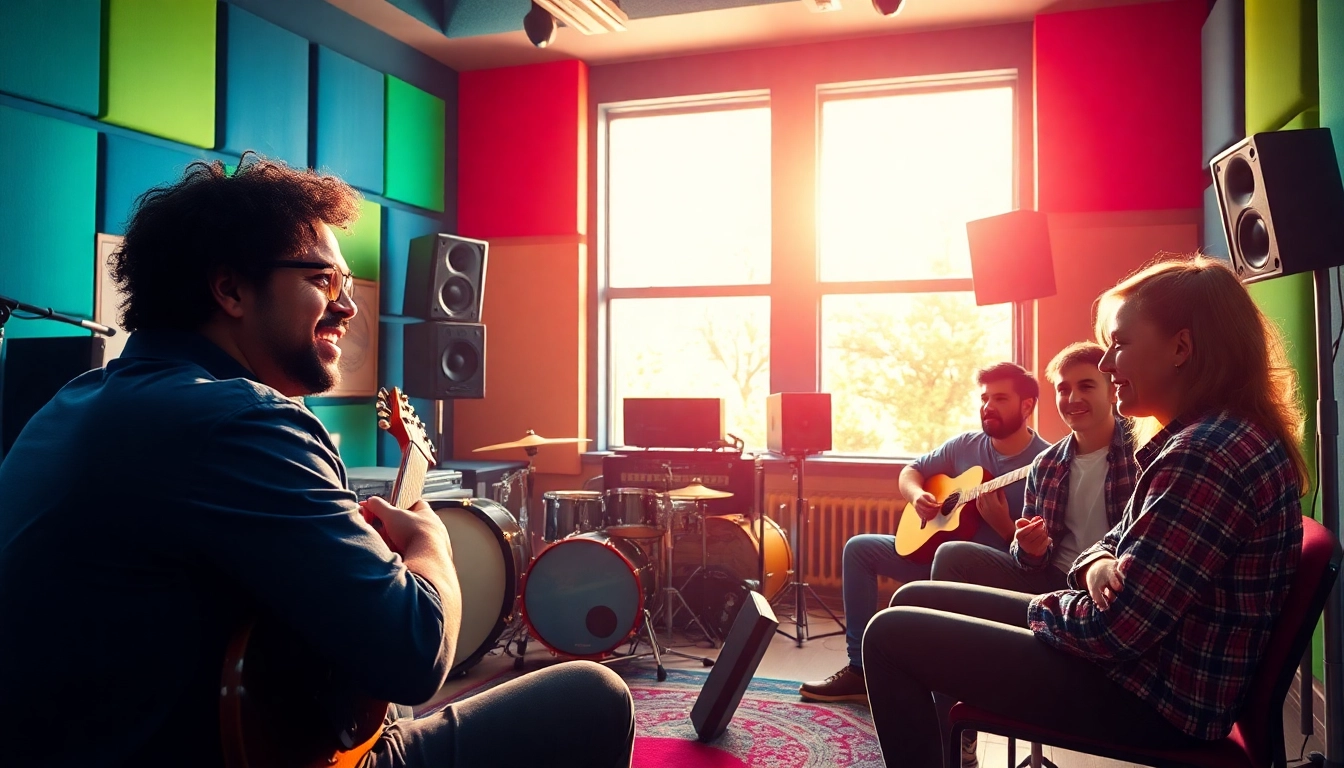Understanding the Basics of Music Pitching
What is Music Pitching?
Music pitching is the process by which artists, producers, and songwriters formally present their songs or music projects to a variety of stakeholders in the music industry. This could include record labels, music blogs, playlist curators, radio stations, and other platforms that can help elevate a track’s visibility and reach. The objective of music pitching is to persuade these stakeholders to listen to the music and ideally promote it to wider audiences. In a digital age where independent artists rule the streaming platforms, effectively pitching music has become essential for anyone looking to break into the industry.
Importance of Effective Pitching in the Music Industry
Effective pitching can make the difference between a song that sinks into obscurity and one that captures listener’s interest. In a crowded marketplace where countless tracks are released daily, capturing the attention of curators and influencers is paramount. A well-crafted pitch not only showcases the song but offers valuable context about the artist, establishes the artist’s identity, and communicates the intended audience for the music. This approach can lead to playlist placements, blog features, and even radio airtime. Additionally, a successful pitch can open doors to collaboration opportunities and build vital industry relationships.
Common Mistakes to Avoid When Pitching Your Music
Many artists fall prey to common pitfalls during the music pitching process. One common mistake is failing to personalize a pitch. Sending out generic emails to numerous recipients is unlikely to yield results. Curators and influencers are more inclined to engage with pitches that resonate with their brand. Another frequent error is neglecting to include essential information about the music—think release dates, genre, and a brief biography. Additionally, poor timing can be detrimental; for instance, pitching to playlist curators too close to a release may diminish the chances of being featured. Avoiding these missteps can significantly improve the impact of your pitches.
Crafting Your Music Pitch
Elements of a Compelling Music Pitch
A compelling music pitch has several key elements. First and foremost, it should begin with a catchy subject line to grab attention. Following this, the body of the email must concisely introduce the artist and the song, highlighting unique aspects of the track. Including relevant links to previous work, music videos, and social media accounts can help bolster the pitch. Moreover, incorporating a brief ‘story’ about the song can create emotional connections, making it more relatable. Finally, close with a polite and professional call to action, inviting the recipient to give the song a listen.
Researching Target Curators and Platforms
Before sending out pitches, thorough research on potential curators and platforms is vital. Each curator has a unique taste and preference for the types of music they feature. Tools like music pitching services can provide insight into active curators across various genres, which is immensely beneficial for targeting the right audience. Building a list of curators who have previously featured songs similar in style to yours gives you a strategic advantage. This research phase should also encompass studying how they prefer to receive pitches—some curators have specific submission forms, while others work solely through email.
Creating a Unique Artist Profile
Your artist profile serves as your identity in the industry, and a well-established brand can lead to more successful pitches. It should encompass your musical style, influences, and key achievements. Moreover, a professional press kit is a must. This includes high-quality images, a biography, music samples, and links to social media and music platforms. Your profile should be unique to reflect your artistic individuality while remaining versatile enough to appeal to a range of curators. Regularly updating your profile with new content and achievements keeps it fresh and relevant.
Executing Your Music Pitch
Best Practices for Sending Your Pitch
Once your pitch is ready, it’s time to execute. Sending pitches in batches is often effective rather than a massive outpouring all at once; this allows you to track responses and adjust approach based on feedback. Beyond timing, ensure that your email is well-formatted—clear, concise, and free from typos. Following up is equally important; if you don’t hear back after a week or two, a polite follow-up can reinforce your interest without coming off as desperate.
Timing: When to Pitch Your Music
Timing can be crucial in the pitching process. Ideally, start pitching your music at least a month before a release, allowing ample time for reviews and placements. If targeting large playlists, submit your pitches to those platforms seven days in advance, as highlighted by Spotify guidelines for pitching their curators. The timing of your release also matters; try to avoid busy periods in the music world, such as major festivals or holidays when competition is fierce.
Follow-Up Strategies After Your Pitch
Once you’ve sent your pitch, it’s essential to have a follow-up strategy. As mentioned, sending a polite follow-up after a week is advisable. Use this as an opportunity to reiterate your excitement about the music and add any new context—perhaps a recent accolade or a feature in a publication. However, be careful not to inundate curators with too many messages. A balance must be struck between staying on their radar and overwhelming them.
Measuring the Effectiveness of Your Pitch
Key Metrics to Analyze Pitch Success
After executing your music pitch, the next step is to gauge its effectiveness based on several metrics. One of the main indicators is the response rate from curators—how many opened your email versus how many responded positively. Additionally, track playlist placements, social media engagement post-pitch, and any increase in streaming analytics following your outreach. These metrics help create a clearer picture of what works and what doesn’t in your pitching strategy.
Adjusting Your Strategy Based on Feedback
Feedback is invaluable. Whether it’s from curators who listened but opted not to feature your track or artist friends who provide honest critiques, use this information to refine future pitches. Pay close attention to common themes in feedback to identify areas for improvement. Adapting your strategy may involve changing your approach to pitching, target curators, or even the music itself if consistent feedback points to the same issues.
Building Long-Term Relationships with Curators
Pitches are not just about one-off placements; they should be the start of a long-term relationship with curators. Stay engaged after a pitch, thank them for their consideration, and share any updates on your music. Building rapport can lead to future opportunities. Attend music industry events, engage with curators on social media, and offer value—like exclusive content or features—that can solidify a memorable connection.
Case Studies of Successful Music Pitching
Indie Artists Who Nailed Their Pitches
There are numerous examples of indie artists who have successfully navigated the music pitching process. For instance, artist H.E.R. leveraged personal storytelling in her pitch, which resonated with curators and indeed led to significant playlist placements on platforms like Spotify. Similarly, indie band The Aces took to social media to directly reach out to influential playlists, which eventually garnered them a substantial following. Both cases highlight the power of personal connection and creativity in the pitching process.
Lessons Learned from Failed Pitches
Failures also provide valuable lessons. Take, for instance, the experience of a rock band that sent out pitches with vague descriptions and insufficient contact information. Despite their song’s merit, they received minimal responses, which were later attributed to poor initial impressions. This demonstrates the importance of thorough prep work and personalization in pitches. Additionally, artists who bombarded curators with repeated follow-ups often found themselves blacklisted—which emphasizes the need for patience and respect in the follow-up process.
Trends in Music Pitching: What Works Today
The music pitching landscape is continually evolving. Currently, the trend leans towards authenticity and personalized storytelling. Curators are increasingly drawn to artists who can create a narrative around their music, rather than just focusing on the music itself. Additionally, the rise of social media influencers significantly impacts music promotion. Artists looking to gain traction should consider collaborations with influencers and embedding their songs in trendy networks, tapping into new listener bases. Live streaming performances and engaging content marketing strategies have also become effective tools for enhancing visibility.



